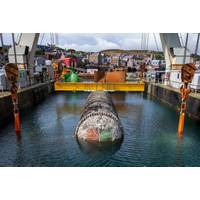
Most Data Lives in the Cloud. What if it Lived Under the Sea?
centers in tropical waters off the coast of Hainan Island.Why move data centers under the waves?Underwater data centers promise several advantages over their land-locked cousins.1) Energy efficiency - The primary benefit is a significant cut in electricity consumption. According to the International Energy Agency, data centers consume around 1–1.5% of global electricity use, of which some 40% is used for cooling.Data centers in the ocean can dissipate heat in the surrounding water. Microsoft’s center uses a small amount of electricity for cooling, while Subsea Cloud’s design has
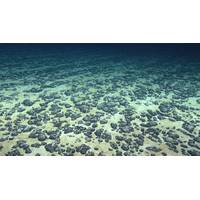
Deep-sea Mining: A New Gold Rush or Environmental Disaster?
are still far from agreeing a set of mining rules, and that the ISA is unlikely to give a green light for the industry to begin.Is mining the sea better than land?Proponents of deep-sea mining say it is a more sustainable way of obtaining the minerals required for the green transition.The International Energy Agency has projected that achieving net-zero global greenhouse gas emissions would see mineral demand quadruple for clean energy technologies.An assessment of TMC's proposed Nauru subsidiary project in the CCZ by information provider Benchmark Mineral Intelligence said that it could have
Transocean's Drillship to be Used for Deep-Sea Mineral Exploration
mining entirely, however, according to peer-reviewed scientific literature, these metals could be delivered with a 40% reduction of the carbon footprint, which is essential when combating climate change.” Luc Vandenbulcke, Chief Executive Officer of DEME Group said: “Since the International Energy Agency reported that society will need six times more metals by 2040 to become a net-zero society in 2050, there have been many national initiatives to secure the necessary supply of raw materials."From the U.S. Inflation Reduction Act, the Australian & Canadian Critical Minerals Strategy
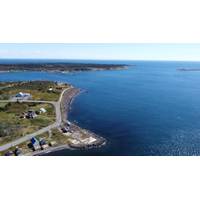
BMT's Off-grid Project Enabling Rural Electrification in Canada
Smart Microgrid Controller technology could be significant for future customers in both commercial and non-commercial/military settings. The global Microgrid market exceeded $6 billion USD in 2020 and is anticipated to grow over 27% CAGR between 2021 and 2027 to $33 billion, BMT said,The International Energy Agency (IEA) has projected that, given today’s technology state, to reach the UN’s 2030 target, about 40% of the total solution will need to be provided through some type of microgrid intervention, BMT said.According to BMT, despite the challenges microgrids face, they are largely
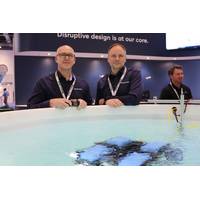
Oceanology ’22 Day 2: New Demands Drive Ocean Innovation
of both were clearly visible at Oceanology International at London’s Excel Centre.The challenges are big, including building out the huge amounts of offshore wind that will be needed to ensure net zero goals, explained Brent Warner, head of World Energy Outlook, Power Unit, at the International Energy Agency, during a morning conference session. Offshore wind reached 5 GW capacity additions in 2020. It needs to get to 80 GW capacity additions in 2030, he said.Mick Cook, managing director at MCL Consultancy, outlined the challenges that will create around seabed geotechnics. To put it into

Wilhelmsen, NorSea Acquire Stake in Norwegian Deep-sea Mining Firm
has such focus on developing new technologies and systems to safely and sustainably extract minerals from Norwegian waters puts us in an interesting position,” says John Stangeland, group CEO of NorSea.Marine minerals have been identified by the World Bank, World Economic Forum, and International Energy Agency as one of the potential solutions to meet the increasing demand for the metals currently used in electric vehicle batteries, clean energy technologies, and consumer electronics.Found in rock concentrations on the seabed and metallic layers that form on the sides of seamounts, Norway is
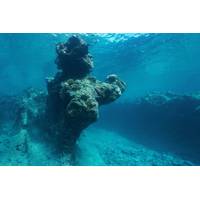
TechnipFMC Joins Seabed Mineral Extraction Arena
, a company best known for its offshore oilfield services and equipment, is looking to diversify its offering and has now joined forces with Loke Marine Minerals (Loke) to develop enabling technologies for the extraction of seabed minerals in Norway.The World Bank, World Economic Forum, and International Energy Agency have recognized marine minerals as one of the potential answers for meeting the growing demand for metals used in electric vehicle batteries, clean energy technology, and consumer electronics.Loke Marine Minerals was established in 2019 by experienced offshore energy professionals with
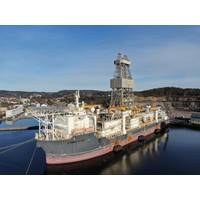
Subsea Mining: All Eyes on Marine Minerals Offshore Norway
of Petroleum and Energy, told the one-day, online marine minerals seminar, organised by GCE Ocean Technology and Norwegian forum for Marine Minerals (NMM).There are a number of drivers for this enthusiasm for seabed minerals exploration and harvesting. Myklatun says that according to the International Energy Agency, current investment plans for mineral supply falls short of needs for making the likes of solar panels, wind turbines and electric vehicles. Others says there’s enough copper on land, but the grades are dropping so cost and environmental impact are increasing.A report from November
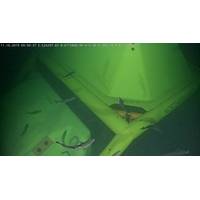
Norway's Carbon Capture and Storage Project Estimated to Cost $2.6B
Norway's ambition to build a full-scale carbon capture and storage (CCS) chain could cost around $25 billion crowns ($2.58 billion), including operating costs for ten years, an economic analysis showed on Thursday.The International Energy Agency (IEA) says CCS technology will be crucial to limiting global warming, helping to decarbonize industries such as cement production, but opponents say it could prolong the use of fossil fuels.Norway, Western Europe's largest oil and producer, wants to prove that the CCS technology can work by capturing CO2 at two industrial sites and storing it under the



 February 2024
February 2024





